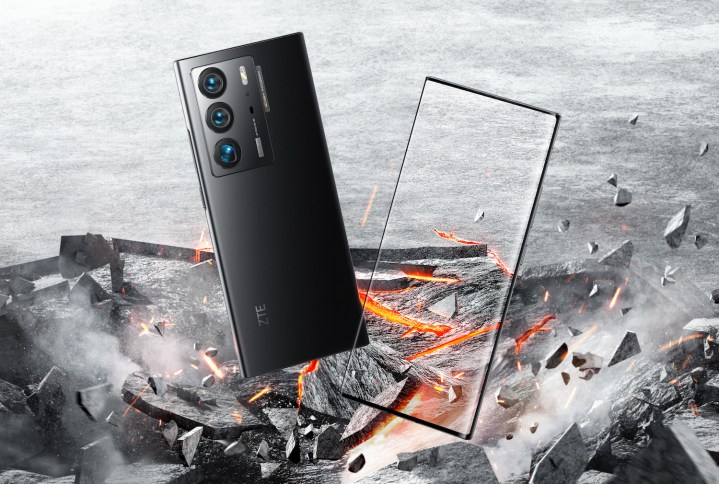ZTE is committed to developing the Under Display Camera (UDC), and its latest smartphone, the Axon 40 Ultra, has a new version fitted under its 6.8-inch screen. The surprisingly powerful phone also has a surprisingly reasonable price, and it’s going to be available globally in the near future.

Let’s start with the UDC. Through some clever technology and lessons learned from previous versions, ZTE says the camera on the Axon 40 Ultra will take better photos, while also making sure the screen around it is clearer. The 16-megapixel UDC’s pixels are more sensitive to light and new A.I. helps minimize noise, plus the camera will reduce glare and fog in real-time, promising “improved image clarity and transparency.”
UDCs have had a difficult start to life, and even Samsung struggled to get them right on the Galaxy Z Fold 3. On the Axon 40 Ultra it’s set at the top of a 6.8-inch AMOLED screen with a 2480 x 1116 pixel resolution, plus a 120Hz refresh rate. It has a dramatic 71-degree curve on either side, giving it a frameless appearance and recalling phones like the Huawei Mate 40 Pro. On the back are three cameras with 64MP each.
The 64MP main camera is joined by a 64MP wide-angle camera, plus a 64MP telephoto camera capable of shooting 5.7x optical zoom images. Features include optical and electronic image stabilization, 8K video recording, and various modes including several for taking photos of the night sky. All this is powered by Qualcomm’s Snapdragon 8 Gen 1 processor and a 5,000mAh battery with 65W fast charging.

ZTE doesn’t mention the software in its press release. ZTE no longer lives under the shadow of its previous restrictions, so Google Play and Google Mobile Services should be onboard. However, it’s unknown which version it’ll be, or what software update commitment ZTE has at the time of writing. It’s also unknown which 5G bands the phone supports across the world.
What about the price? The ZTE Axon 40 Ultra costs $799 or 709 British pounds, and will be available from June 21 through ZTE’s online store. The global release includes the U.S., the U.K., Canada, most of Europe, the Middle East, and Africa. The ZTE Axon 30 Ultra was a pleasant surprise and received a recommendation in our review, and we’re hoping that positive trend continues with the sequel.
Editors' Recommendations
- I tested the Galaxy S24 Ultra’s new camera, and it shocked me
- Google’s Pixel 7 could adopt a futuristic under-display selfie camera
- ZTE Axon 30 Ultra vs. Google Pixel 5: Head-to-head comparison
- ZTE’s new Axon 30 Ultra takes normal, wide, and zoom photos all at the same time
- Camera zoom shootout: Galaxy S21 Ultra vs. Huawei P40 Pro Plus




